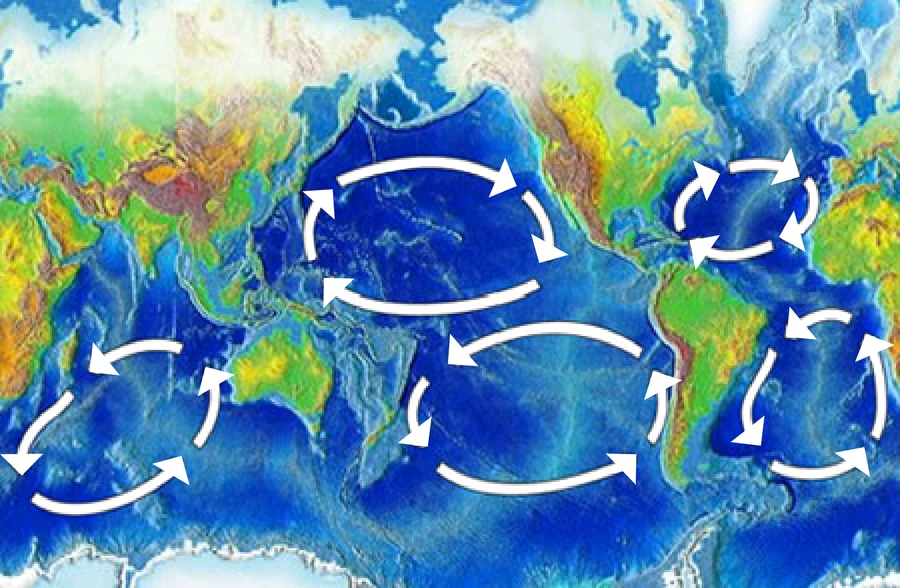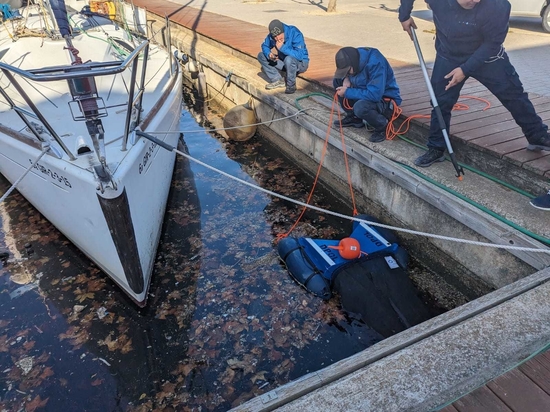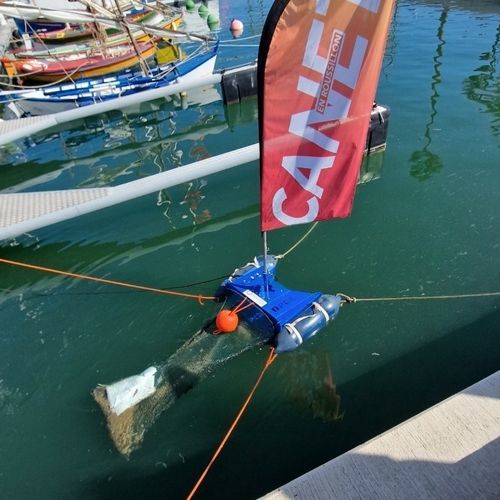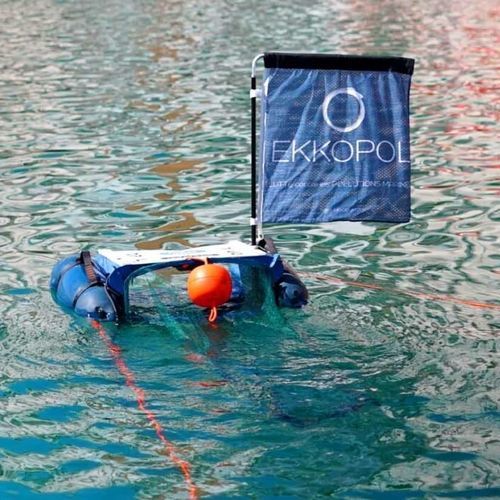
#Industry News
Ocean gyres: the ultimate destination for our plastic waste?
Why collect waste before it drifts out to sea?
In the oceans, ocean currents form gyres, i.e. giant whirlpools. These gyres are located at mid-latitudes and are driven by trade winds[i], variations in water density and the Coriolis force[ii].
Plastic waste discharged into the oceans by human activity is naturally carried along by ocean currents, and some of it concentrates in the 5 gyres identified to date: two in the Atlantic Ocean, two in the Pacific and one in the Indian Ocean. In the North Pacific, researchers have identified 9 different languages among the wastes studied, with the oldest dating back to 1977!
Although navigator Charles Moore, who first spoke of this phenomenon in 1997[iii], used the term “plastic continent”, these areas of accumulation are not mainly made up of macro-waste forming an island of floating waste. Instead, they concentrate mainly microplastics, which colonize the water column to a depth of at least 30m, and are more akin to a “plastic soup”.
Plastic waste fragments into microplastics through photodegradation, mechanical abrasion and biodegradation[iv]. In this form, they become impossible to remove from the environment.
Despite the tens of thousands of nautical miles sailed around the world by the Ekkopol sailors, none of them has been able to observe these famous continents of waste at sea: this waste lies between 2 waters and does not constitute a continent in the strict sense of the word. It is therefore impossible to collect them simply, and their slow degradation represents a mortal danger to biodiversity.
Indeed, the consequences of microplastics are serious and probably still underestimated. We already know that the ingestion of microplastics by living organisms results in the diffusion of pollutants into their bodies, posing a real danger to the entire food chain. For example, whales are contaminated by phthalates[v], the most abundant photosynthetic organism on Earth, the Prochlorococcus bacterium, is hampered in its photosynthesis mission[vi] and the polar bear (again) is facing reproductive difficulties.
Moreover, ocean gyres are not the only graveyard for plastics. Plastics concentrate there, but also continue their journey elsewhere[vii]. It is therefore utopian to imagine simply collecting the waste that nature naturally gathers in the middle of the oceans. This waste therefore becomes “ultimate waste” [x].
High concentrations are also found off the coasts of industrial and urban areas around the world. The Mediterranean alone accounts for 7% of the planet's microplastics[viii]. Emilien Pierron, who sailed the Java Sea and the Strait of Malacca between Bali and Port Kelang, observed a concentration of waste in the water that left a deep impression on him, and which he saw nowhere else during his round-the-world sailing trip. In Antarctica, near the Weddell Sea where Geoffroy de Kersauson regularly sails, Greenpeace discovered in 2018 that seven out of eight water samples contain microplastics, and seven out of nine snow samples contain persistent chemicals known to cause developmental and reproductive disorders in animals[ix].
Ocean gyres, as useful as they have been in raising public awareness, should not be seen as the only marine areas polluted by plastics. This pollution is worldwide, and still under-researched. Its consequences on living organisms, of which we are a part, are still poorly understood and probably underestimated.
The oceans can't be cleaned up, so let's reduce our waste at source and prevent it from getting out to sea.
Sources:
[i] Océan plastique, Nelly Pons, 2020, p. 65
[ii] The Ocean Plastic Crisis, Ellen MacArthur Foundation, 2016, p. 15
[iii] Ibid.
[iv] Accumulation of microplastics in the North Pacific Subtropical Gyre, Nature, 2018, p. 508
[v] Une partie d’entre eux sont classés comme « substances toxiques pour la reproduction »
[vi] Plastic leachates impair growth and oxygen production in Prochlorococcus, the ocean’s most abundant photosynthetic bacteria, Sasha G. Tetu, Indrani Sarker, Verena Schrameyer, Russell Pickford, Liam D. H. Elbourne, Lisa R. Moore, Ian T. Paulsen, 2019, p. 371-379
[vii] Océans, le mystère plastique, Vincent Perazio, 2016
[viii] Pollution plastique en Méditerranée, sortons du piège !, rapport du WWF, 2018
[ix] Microplastics and persistent fluorinated chemicals in the Antarctic, rapport de Greenpeace, 2018
[x] article L541-2-1 sur les déchets ultimes




